Sunny Malta was our first port of call during our ambitious trip with 16 month old Baby A through Europe this autumn. We had a great time exploring the rich history and culture of this tiny island nation, albeit at a much slower and leisurely pace than our prior trips sans baby.
Malta is officially comprised of 3 islands situated in the azure waters of the Mediterranean Sea – main island Malta, Gozo, and diminutive Comino. Since we were pressed for time, our explorations were limited to just the main island from our base at an AirBnB in the Sliema neighborhood.
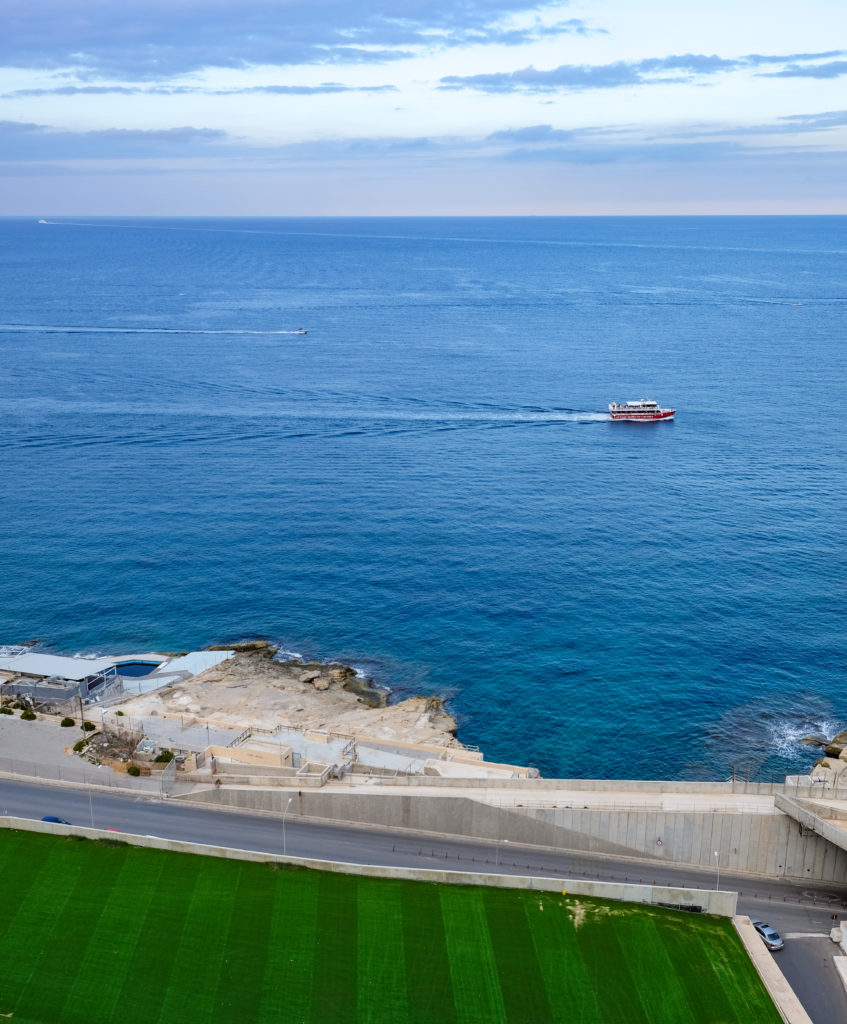
Azure waters of the Mediterranean Sea from our Sliema apartment
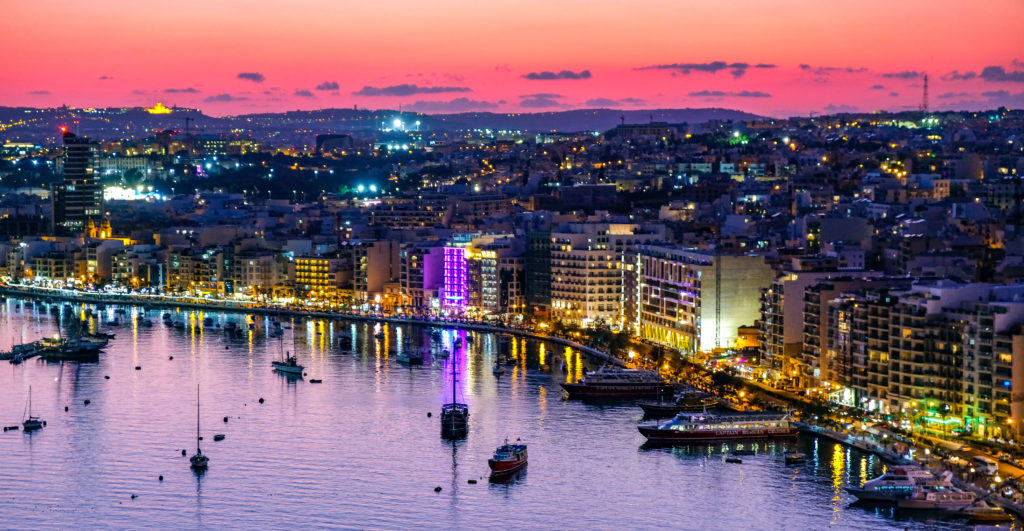
Dusk falls across the Sliema marina
Over its ~5000 years of recorded history, Malta’s prime location off the coast of Africa and Italy have endangered it to multiple invasions over the centuries, with each occupying force bringing along their food, culture and language. From the Sicilians, Phoenicians, Romans, Byzantine and Arabs in ancient times, Malta has also had to endure occupations by the French, and Spanish in the medieval times. Malta then saw a brief rule by Napoleon’s French forces, then the British from the early 1800s till their eventual independence in 1964. However the occupants that had the most lasting influence on Malta were probably the Knights of St John, who ruled over the island from the early 1500s for over two centuries.
The Knights of St John arrived in 1530 and are credited with building the capital Valletta as well as establishing Malta as a power to be reckoned with after defeating the Ottoman Turks during the great siege of 1565. The Knights were warrior monks from aristocratic lineage, who originally started out in Jerusalem to protect the crusaders, then eventually took over the Island of Malta after fighting the Turks in Rhodes. Valletta’s honey colored limestone buildings and fortress walls still bear testament to the formidable strength of the fortress city that the Knights of Malta built.
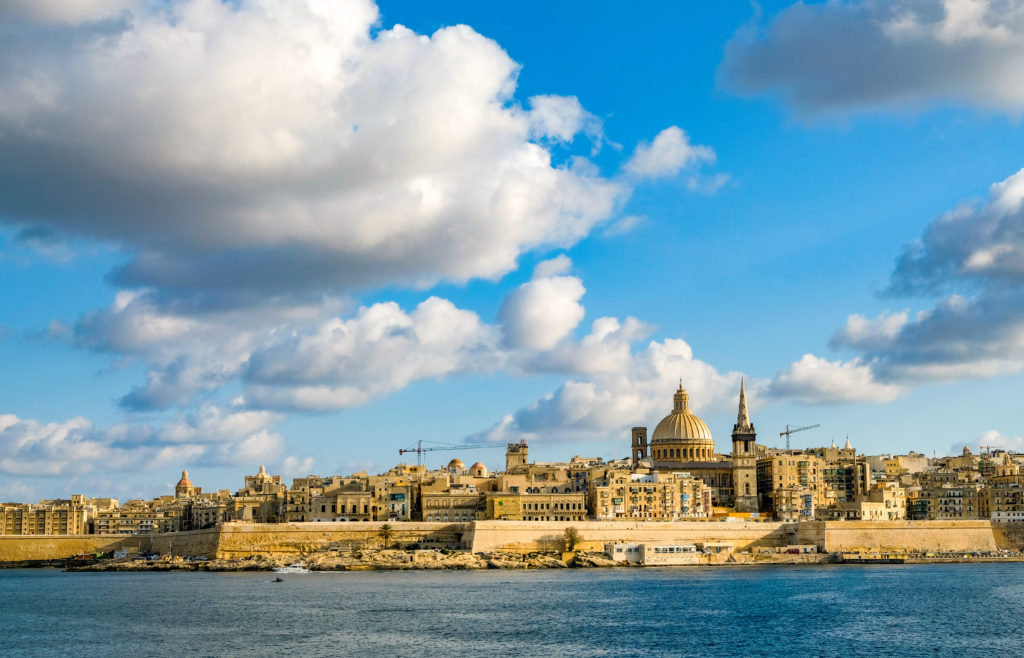
The fortified city of Valletta
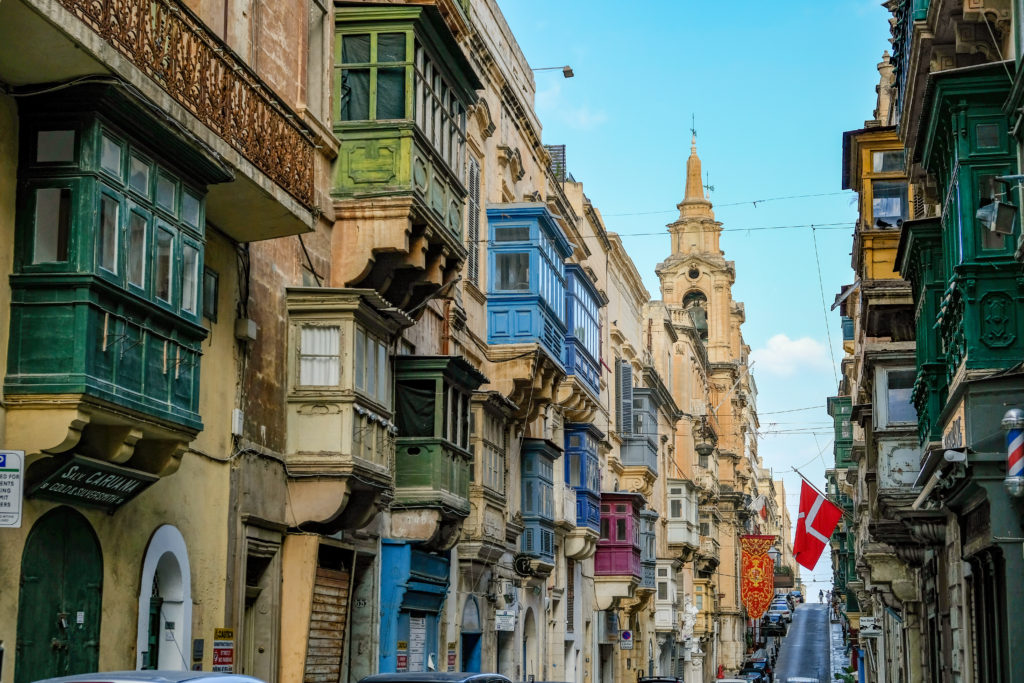
Colorful windows flanking the narrow streets
The Grandmaster’s Palace
Built in the mid 1570s by architect Gerolamo Cassar, the opulent Grand Master’s Palace was where the supreme head of the Order of the Knights of St John would reside and hold court for visiting foreign dignitaries. The Palace is filled with reminders of the massive wealth and power that the Order presided over – from opulently decorated banquet and visiting halls, to rich tapestries depicting exotic settings, to the Armory filled with weapons of war. In modern times the Palace serves as the office of the President of Malta.
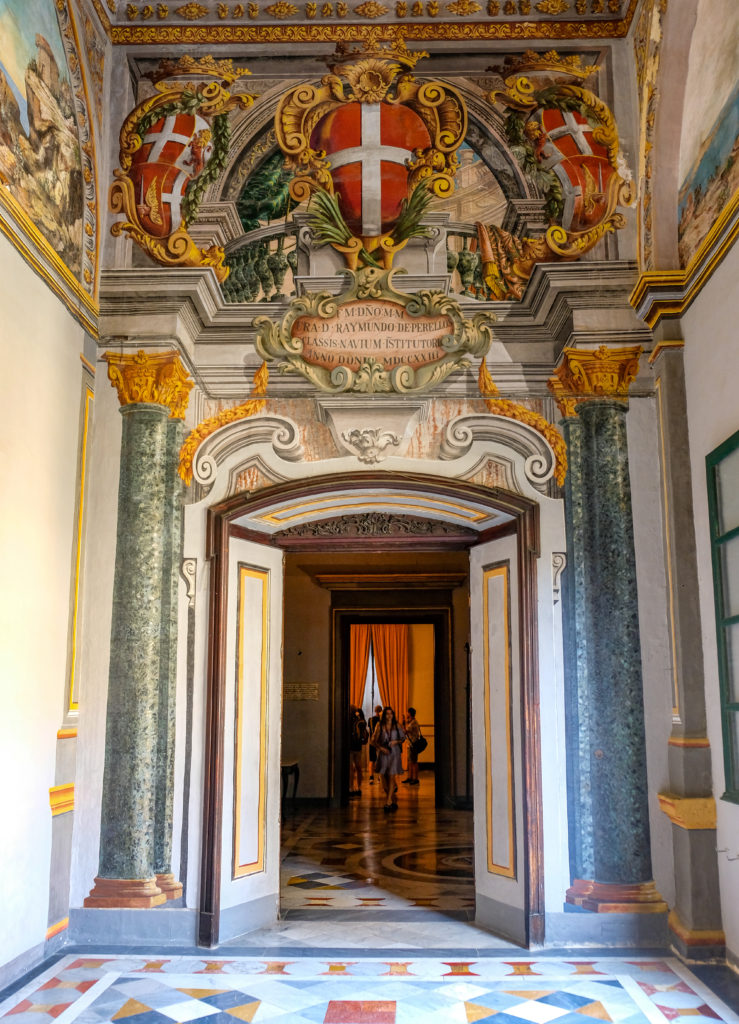
One of the main entrances to the Palace wings
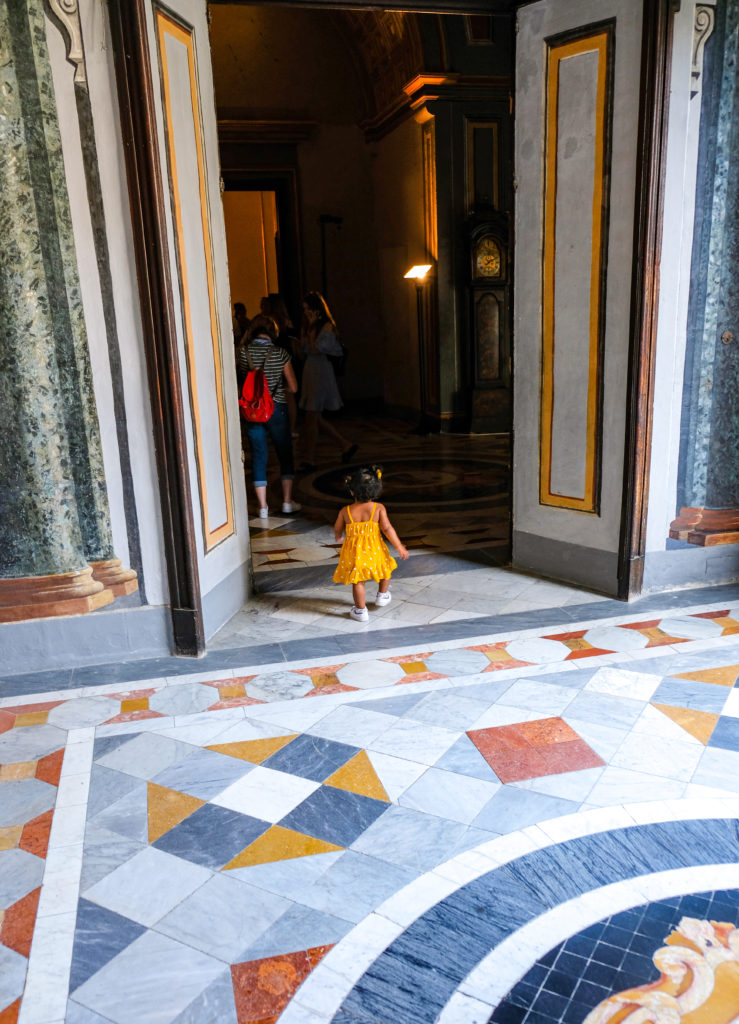
Off to explore solo
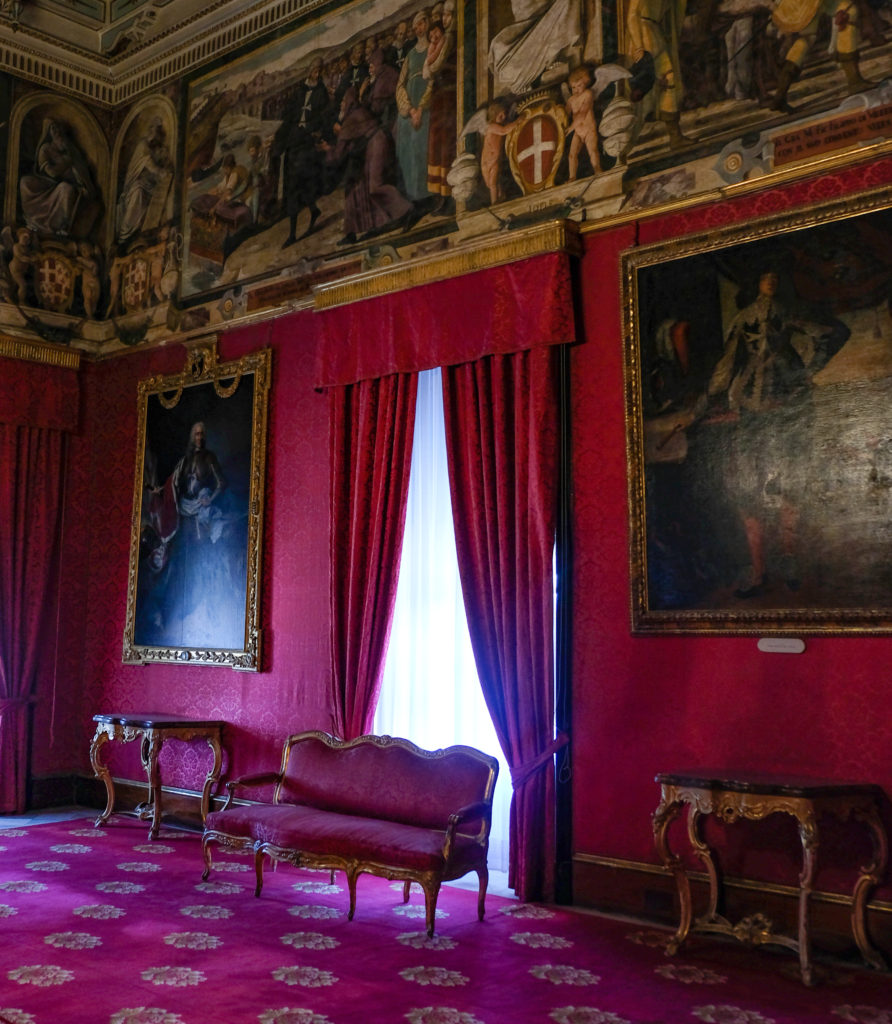
The staterooms are kept purposely dim lit to preserve the tapestries and paintings

These creepy armory mannequins seem up to no good

1,2,3…flex!
St John’s Co-Cathedral
The St Johns Co-Cathedral is one of the most visited locations in all of Malta and most visible reminders of the influence of the Knights of St John. The Cathedral was first built in 1578 with a plain and modest, yet imposing facade. From the 1600s on each Grandmaster would commision painters and sculptors to adorn and embellish the interiors – and the result is one of the most beautiful baroque churches in all of Europe. Artist Martia Pretti painted the various frescoes depicting scenes from the life of St John on the vaulted nave ceiling, but the most famous piece of art in the Cathedral is Caravaggio’s 1608 painting depicting The Beheading of St John The Baptist. Even the marble tombstones on the floor are decorated with coats of arms depicting the noble heritage of each of the 400 plus Knights buried there.
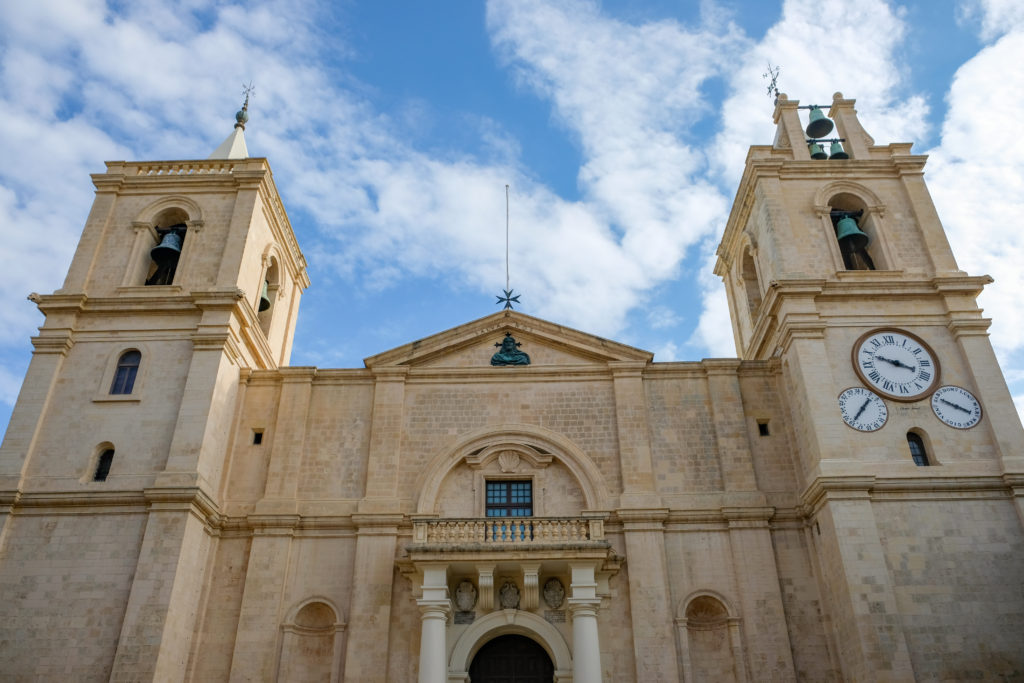
Deceptively plain facade of St John’s Co-Cathedral
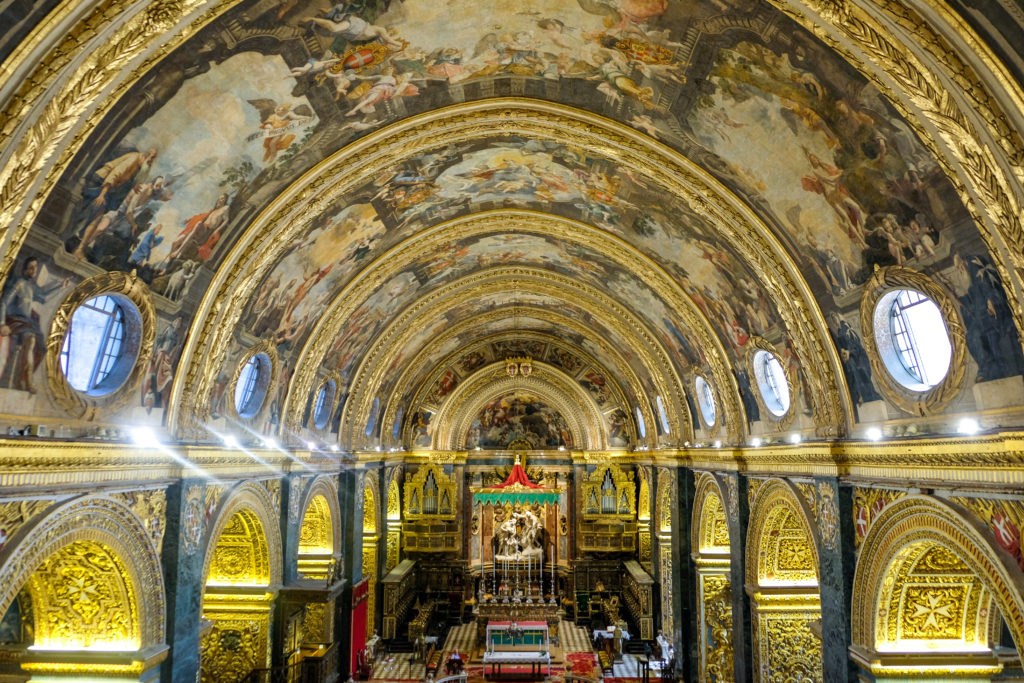
But once you enter, this Baroque masterpiece awaits
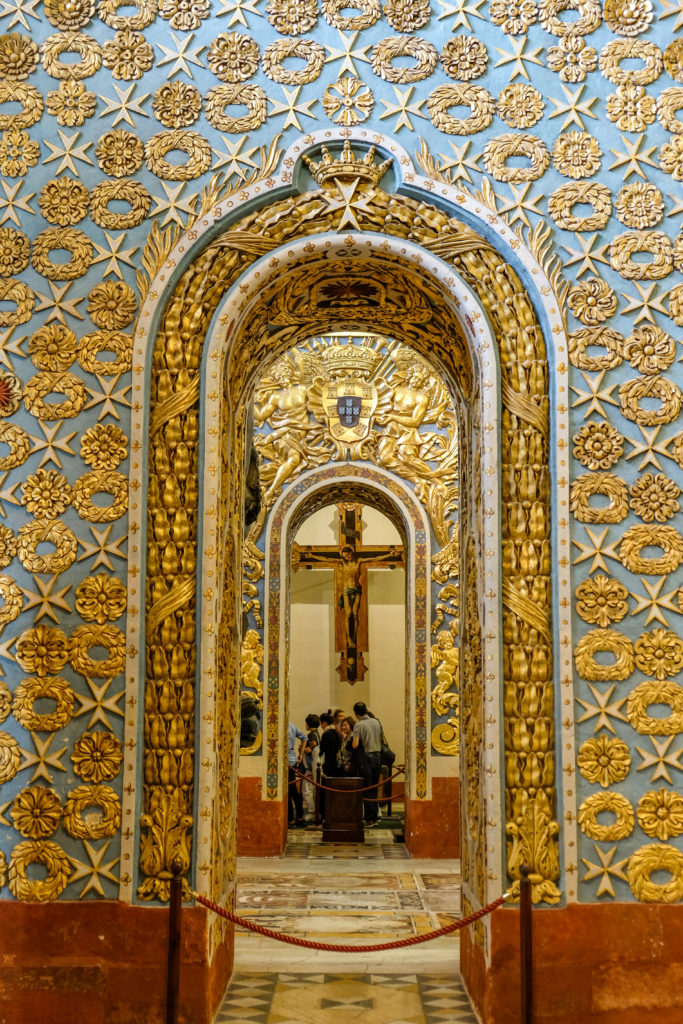
Gilded decorations adorn every surface
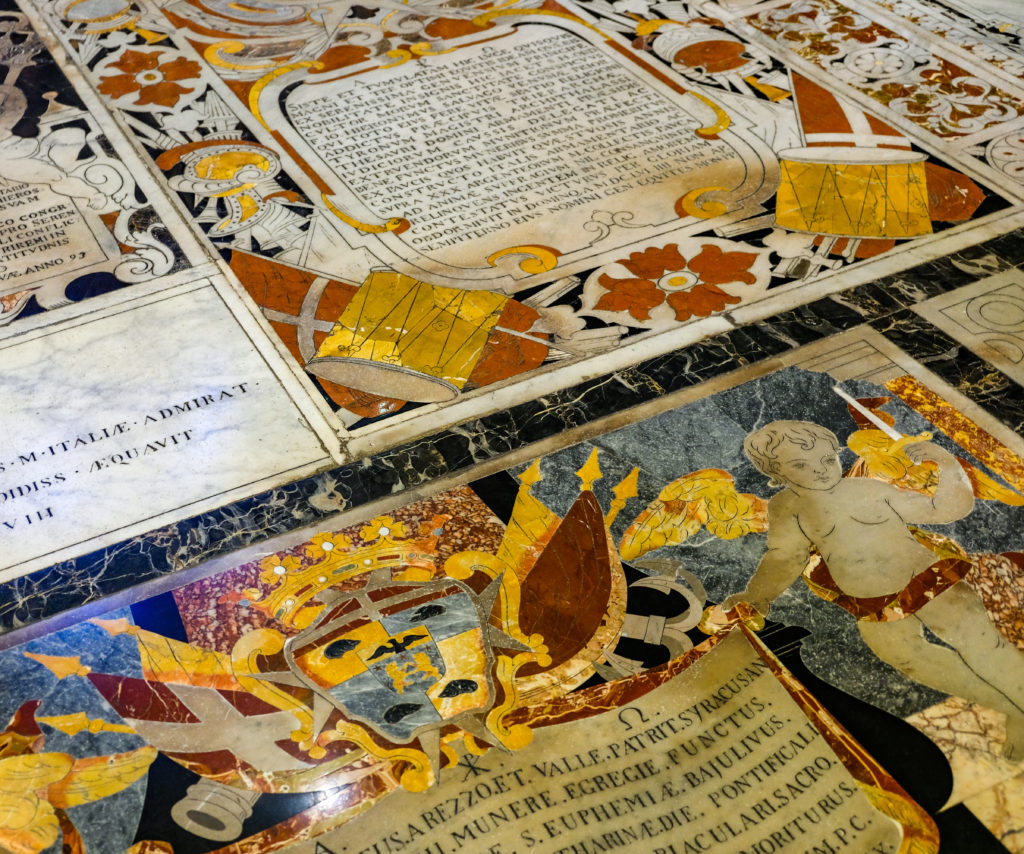
Even the marble tombstones are richly decorated
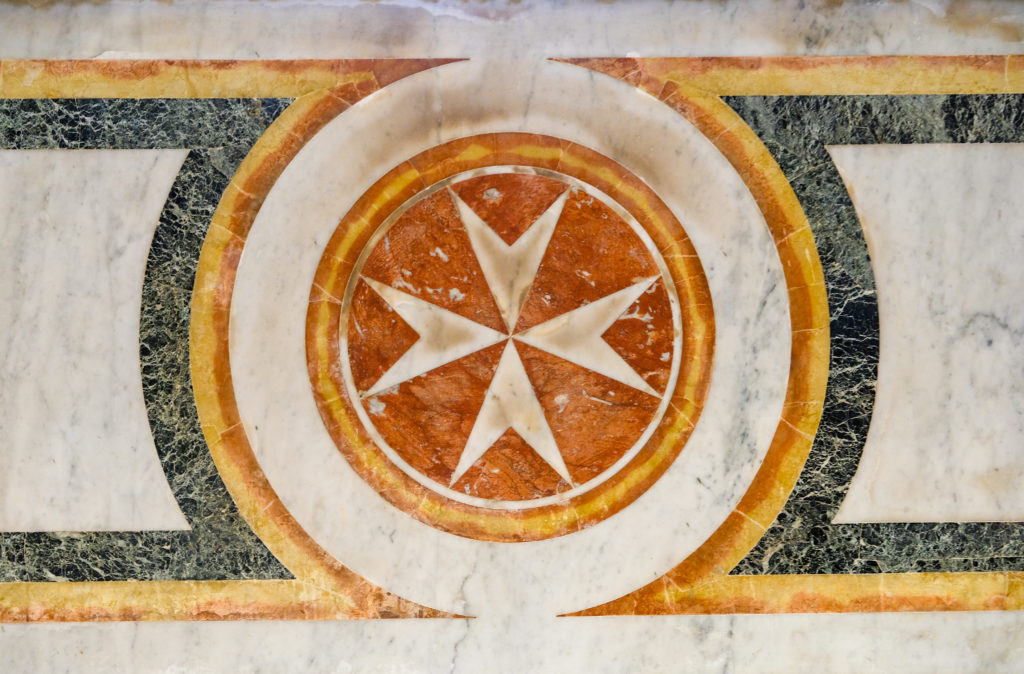
8 edge pointed Maltese cross signifying the Beatitudes from the Gospels, as well as the the 8 Langues (tongues) of the various locations the Knights came from.
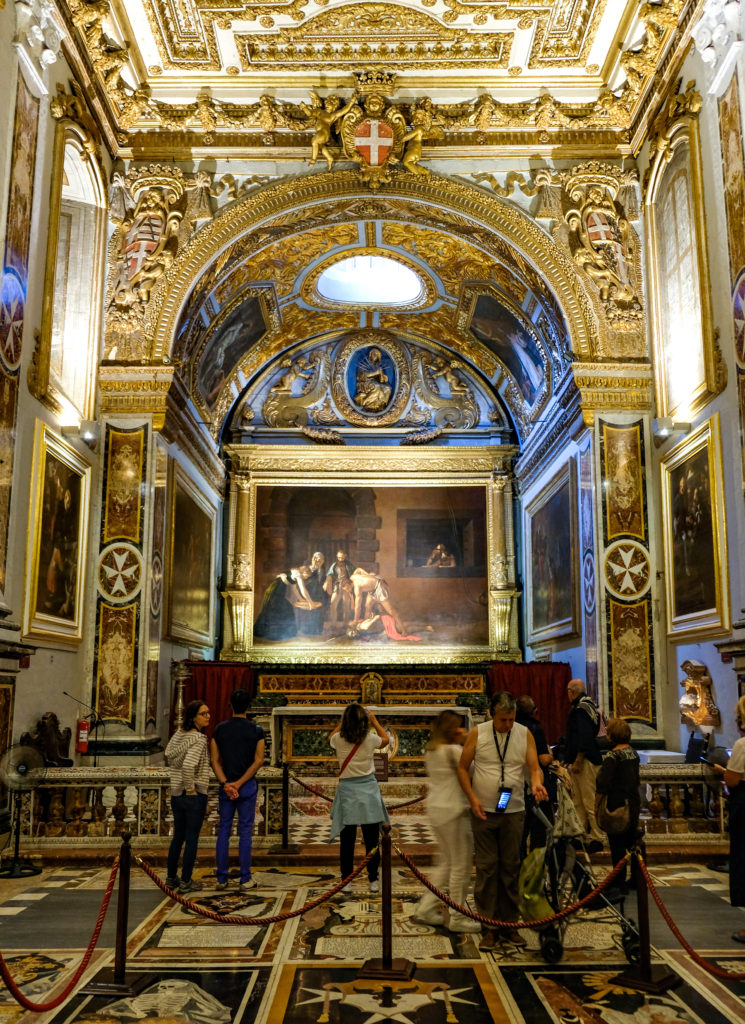
Caravaggio’s evocative painting The Beheading of St John The Baptist
St Paul The Apostle & Christianity
St Paul the Apostle was supposedly shipwrecked on Malta in 60AD, and then proceeded to evangelize and convert the local population to Christianity during the rest of his stay. Ever since those biblical days, Malta has had a strong Catholic tradition, bore by the sheer number of churches one can find on the Maltese islands. There are currently ~370 churches across Malta and Gozo – literally a church for every day of the year! We visited the St Paul’s church in Valletta hoping to view a sacred relic of the Apostle’s wristbone, as well a part of the pillar on which he was martyred in Rome. But unfortunately the church doors were closed for the day, so we had to make do with appreciating just the exterior of the church.
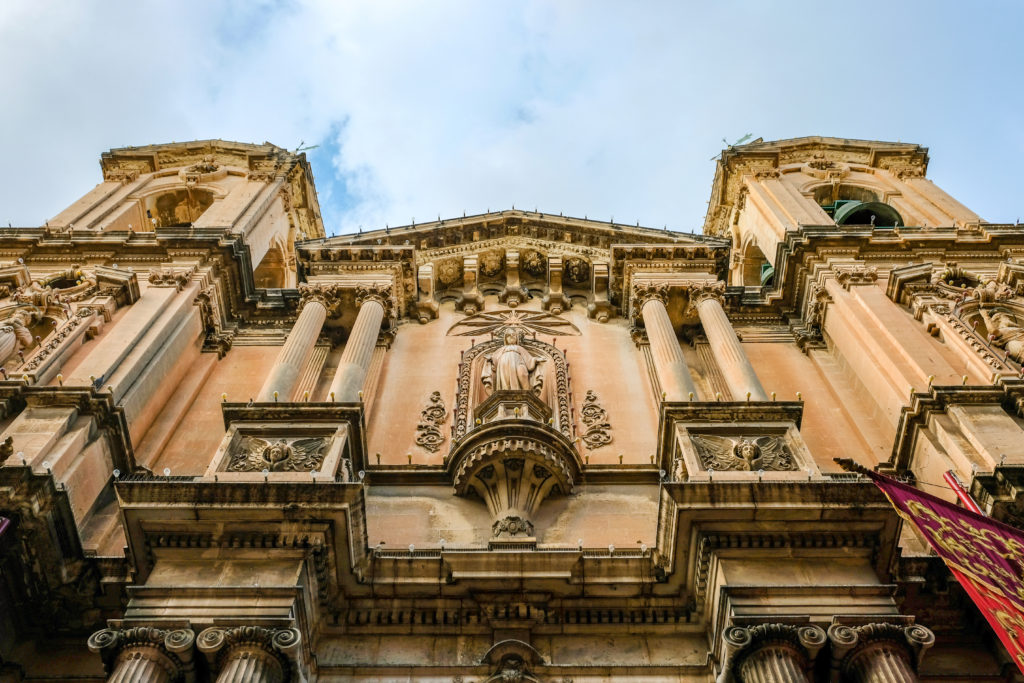
St Paul’s Shipwreck Church, Valletta
Upper Barakka Gardens
The Barakka Gardens on the south eastern edge of Valletta offer prime viewpoints across the Grand Harbor stretching over the three cities of Isla, Birgu and Karkara. Birgu was once the original capital of Malta, before the Knights of St John built and installed Valletta as their seat of power. Besides offering expansive views, there were multiple cannons dotting the bastion walls – a reminder of the fortress city of Valletta’s importance in guarding against invasions through the harbor.
We spent the evening relaxing in the gardens, enjoying the views and hanging out by the flowers and fountains, while Baby A decided to make some new friends with some local pigeons instead.
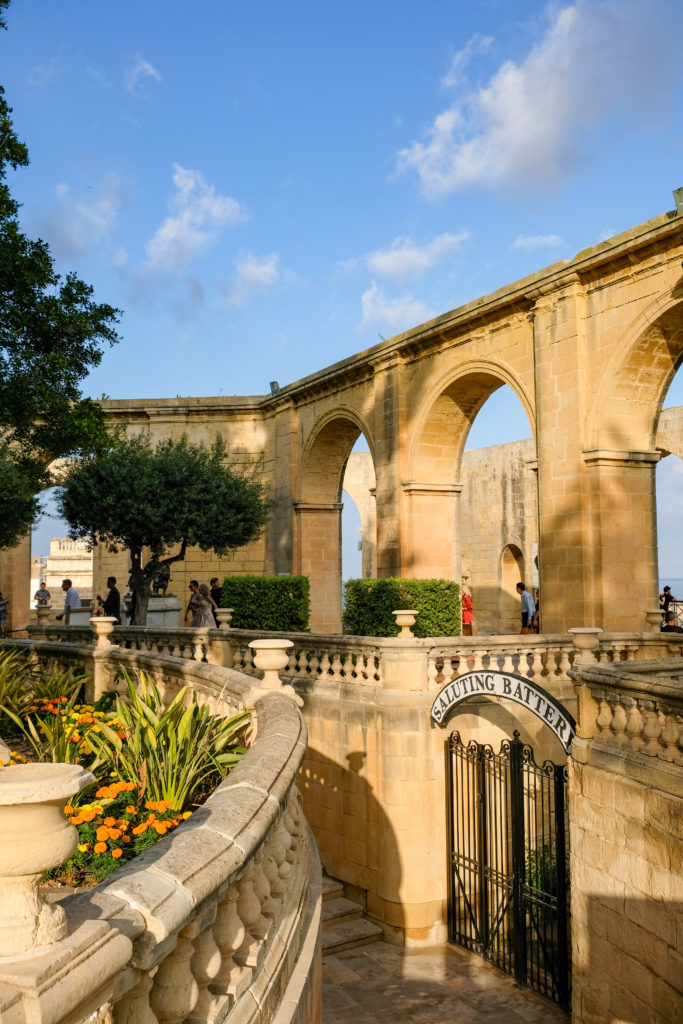
Arcaded Upper Barrakka Gardens
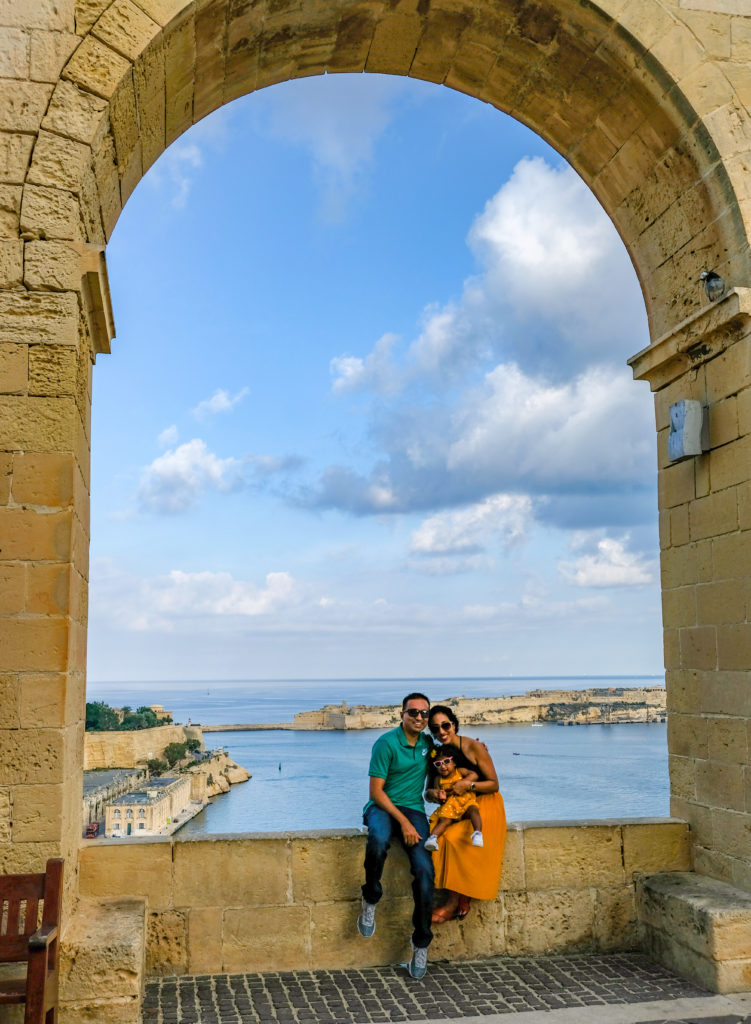
The arched columns make for a great photo frame of the Grand Harbor
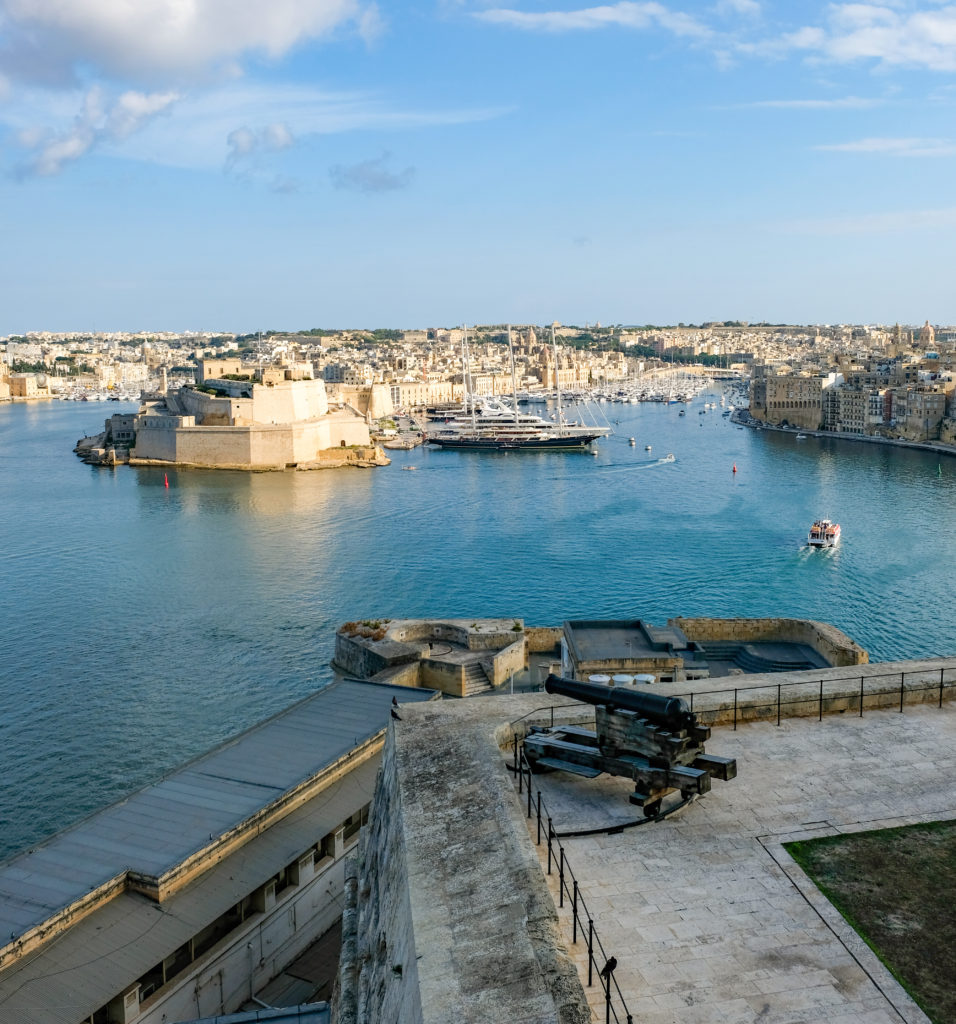
Cannons flanking the view of Birgu across the harbor
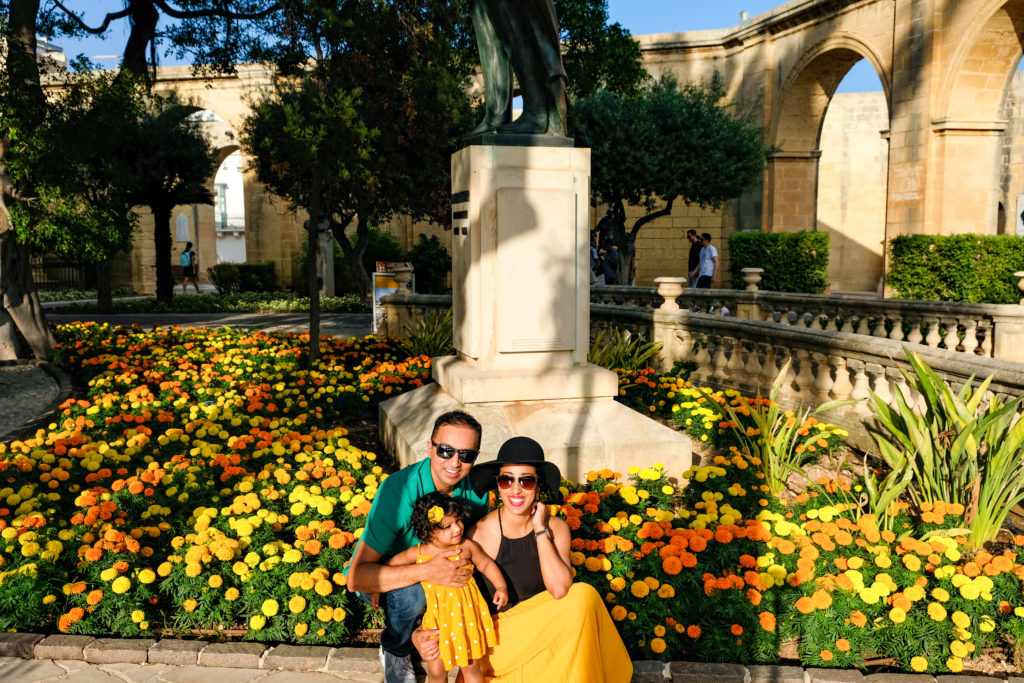
Colorful flower gardens all around
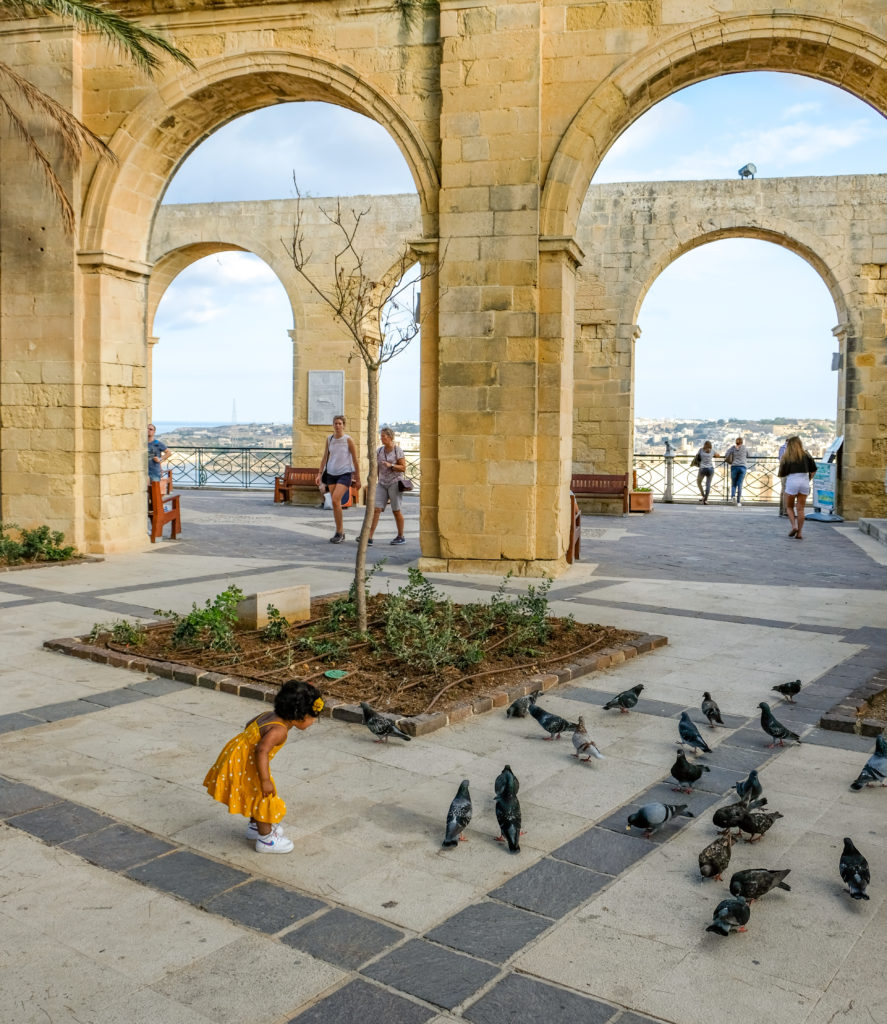
“Hi Pigeons!”
Marsaxlokk Fishing Village
The tiny fishing village of Marsaxlokk comes alive each weekend as locals and tourists alike descend into town for the Sunday fish market. Local fishermen haul in their fresh catch from their brightly painted Luzzu boats directly to the open air stalls lining the shore. Each of these boats had the eye of Osiris painted on the bow to ward of evil spirits, a remnant of ancient traditions that the Phoenicians brought over.
We decided to grab a leisurely lunch at La Reggia – one of the many restaurants along the beachfront serving the freshest catch from the morning. After lunch we took a much needed digestive stroll through the market stalls, gawking at all the fresh fish, produce and traditional Maltese handicrafts on offer.
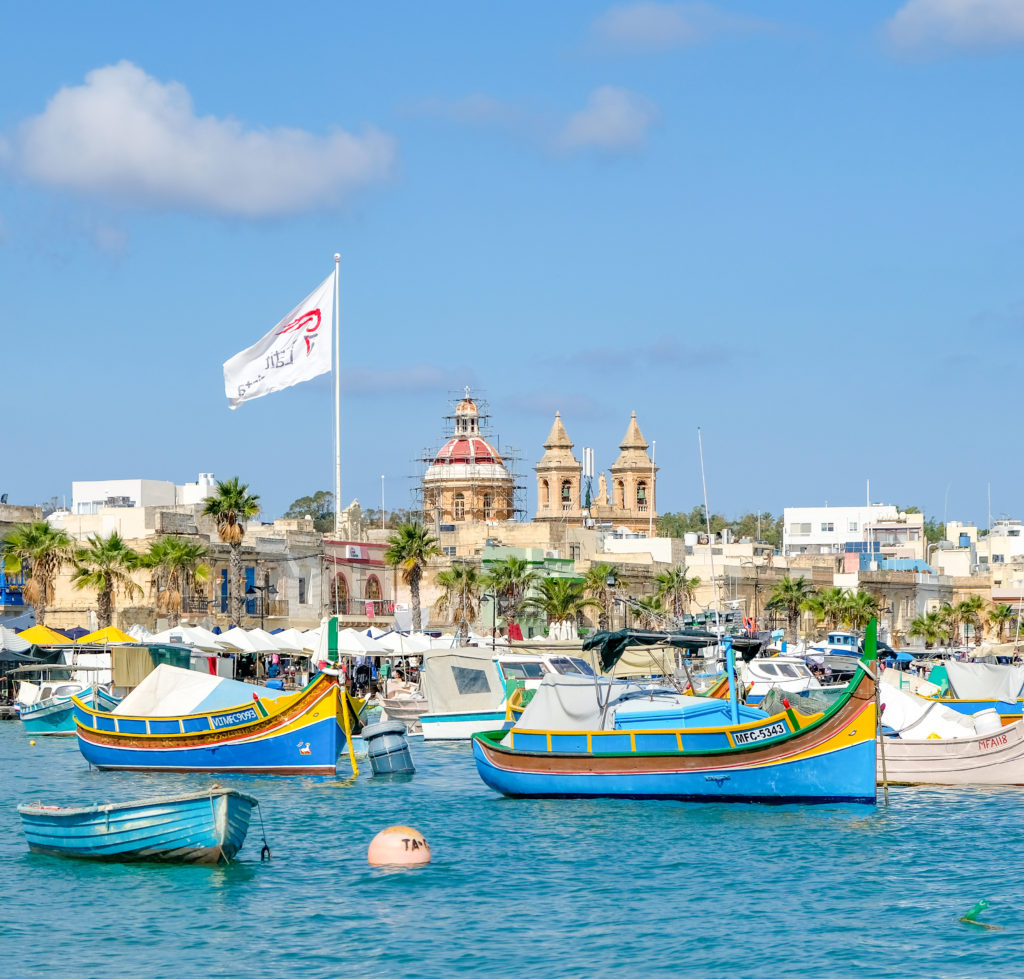
Colorful Luzzu fishing boats in the Marsaxlokk harbor
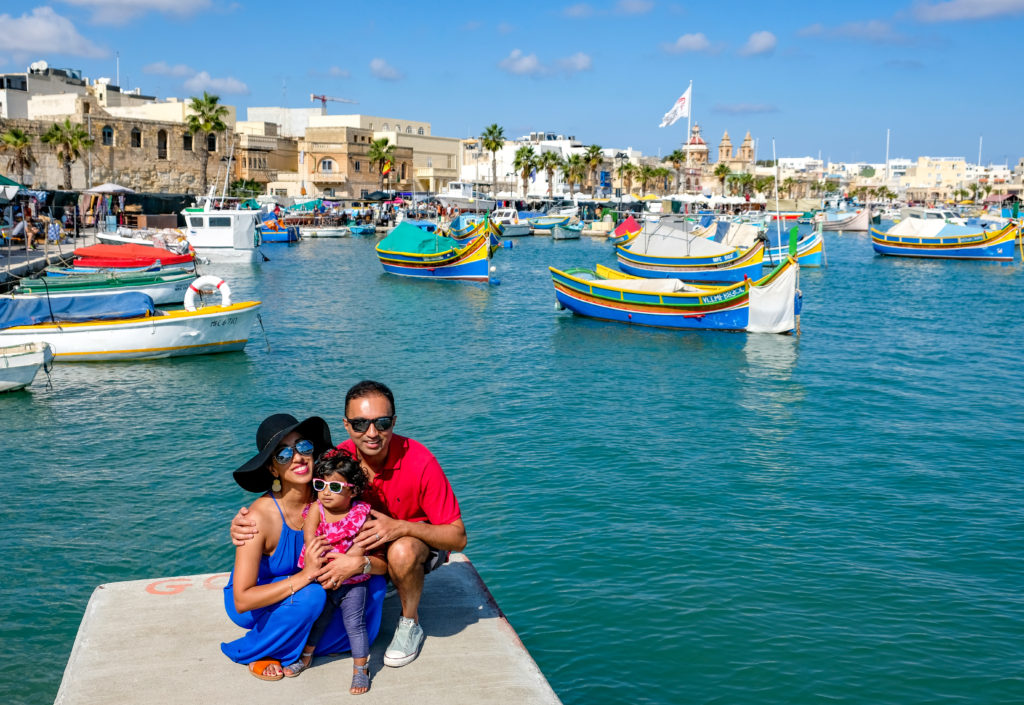
Family pic by the harbor
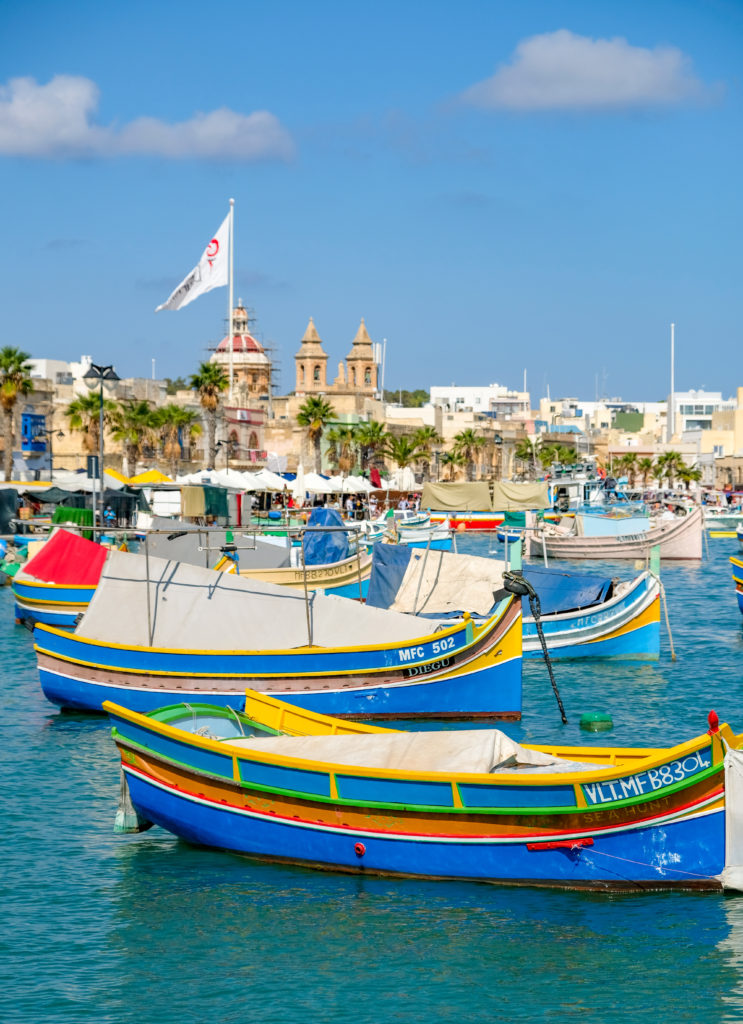
More Luzzus
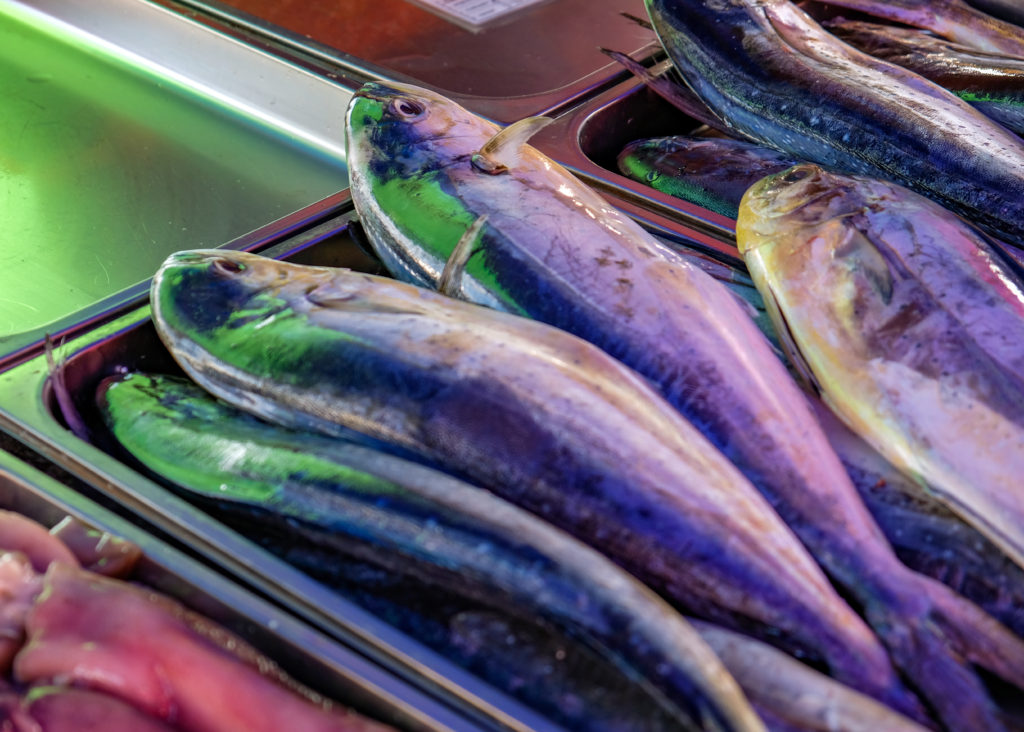
Local favorite Lampuki fish, or Mahi Mahi, at the fish market
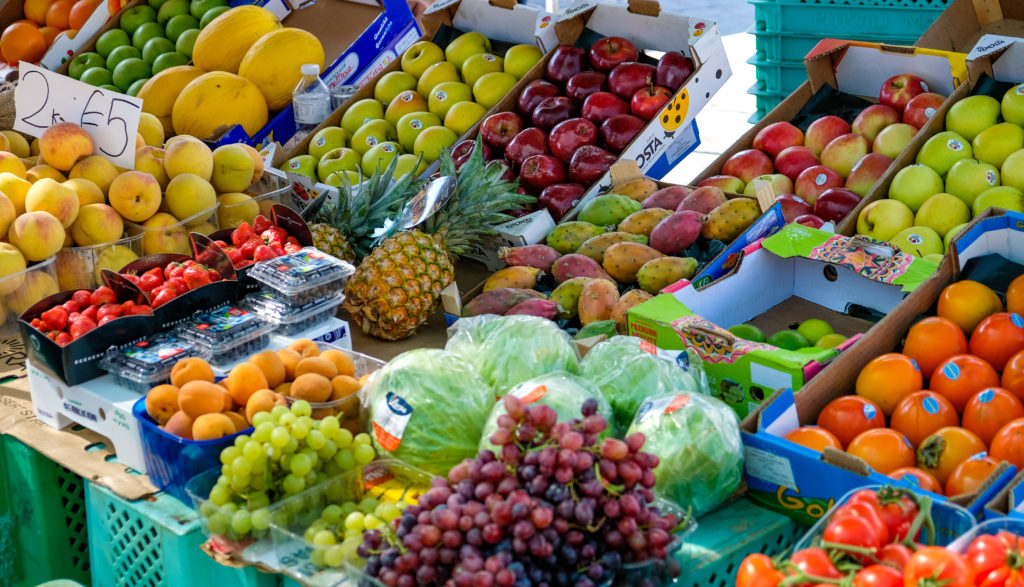
All sorts of fresh produce
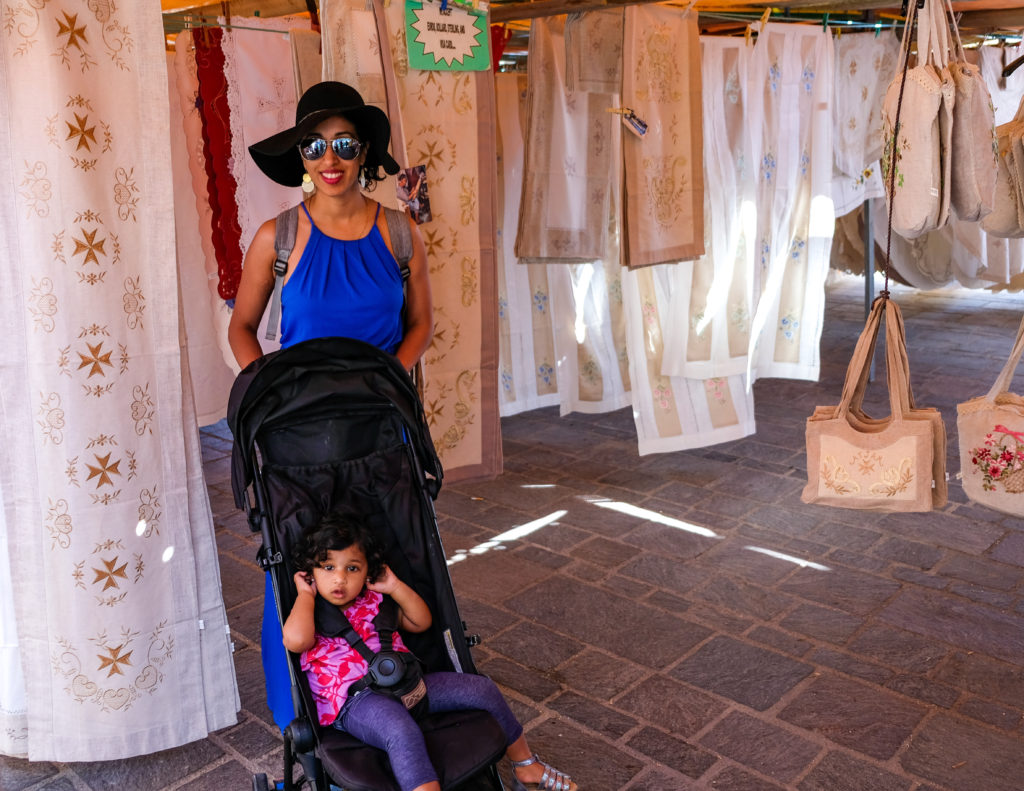
Maltese lace handicrafts make for some great souvenirs
Hagar Qim & Mnajra Ruins
The two temple complexes of Hagar Qim and Mnajra are located off some limestone cliffs on the south of the main island. These UNESCO World Heritage Temple ruins date back to 3600 BC and comprise some of the most ancient stone structures found in Malta. The ruins are testament to the prehistoric Maltese inhabitants who were able to install such massive stone structures with just the most rudimentary of tools.
The ruins are among the oldest free standing stone structures from ancient times, even older than Stonehenge. The 5000 year old Neolithic era ruins are perched in the grassy countryside close to the edge of sheer limestone cliffs. Both the Hagar Qim and Mnajra temples use yellowish brown colored soft Globigerina limestone, which makes it difficult for archeologists and conservationists to maintain the ruins and prevent further damage from the elements.
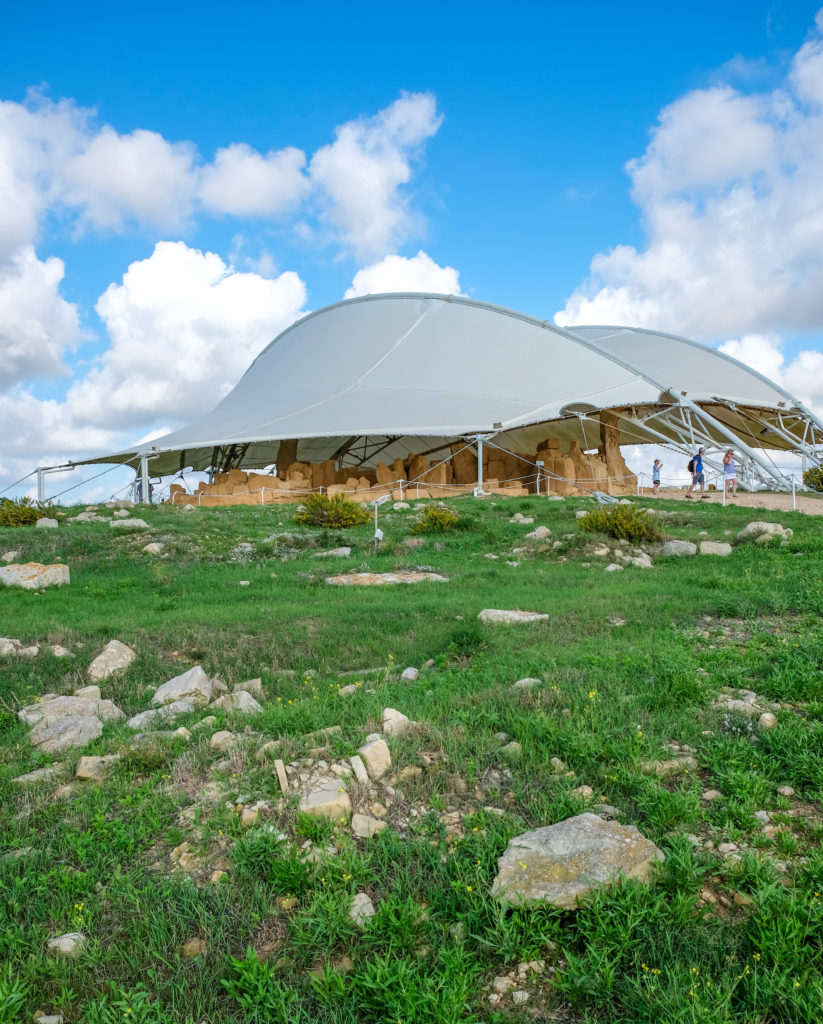
The ruins are covered under tents to protect them from the elements
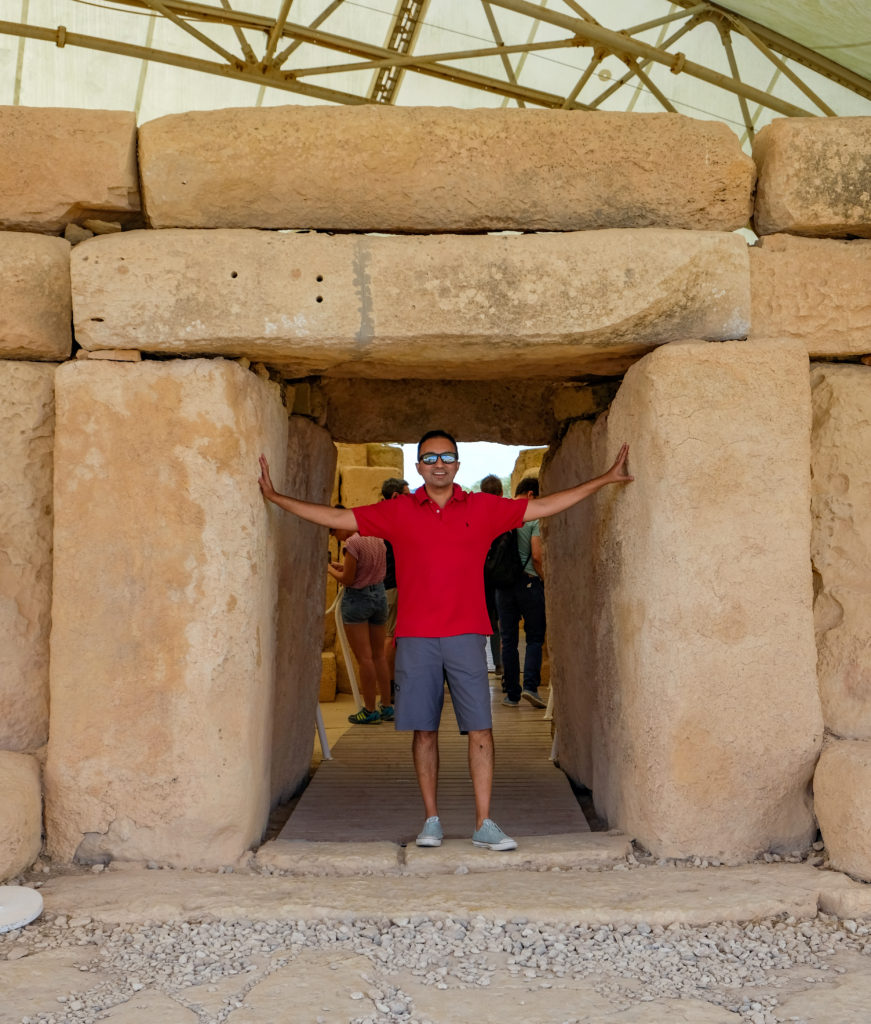
Stone framed entrance to Hagar Qim
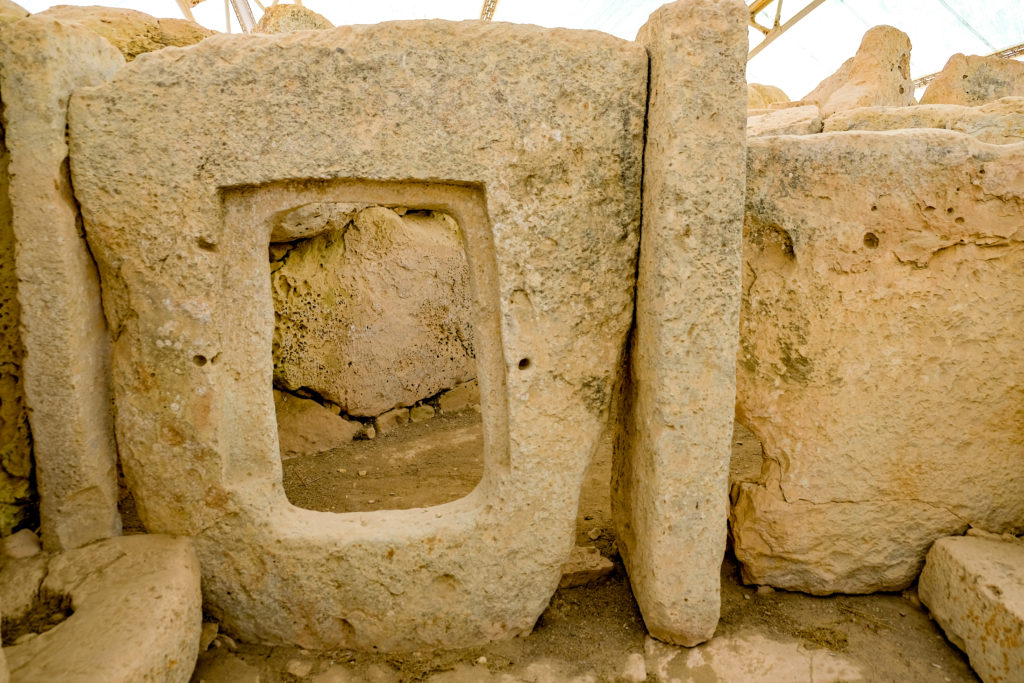
Windows carved into the stone boulders
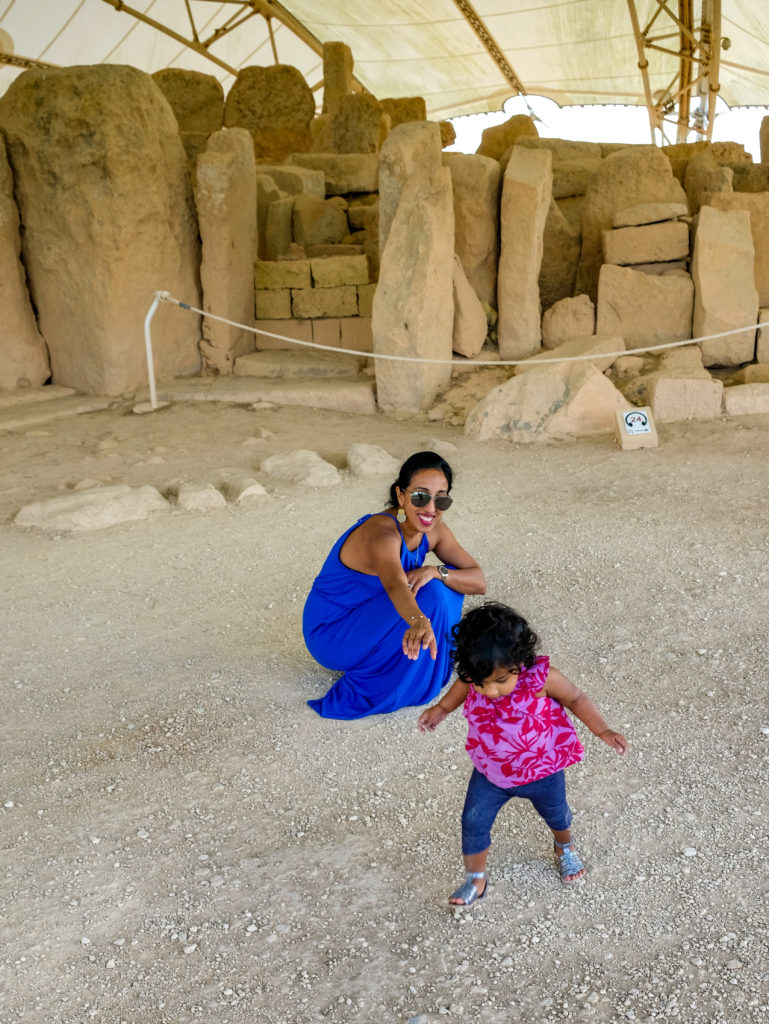
A is off for some excavation of her own
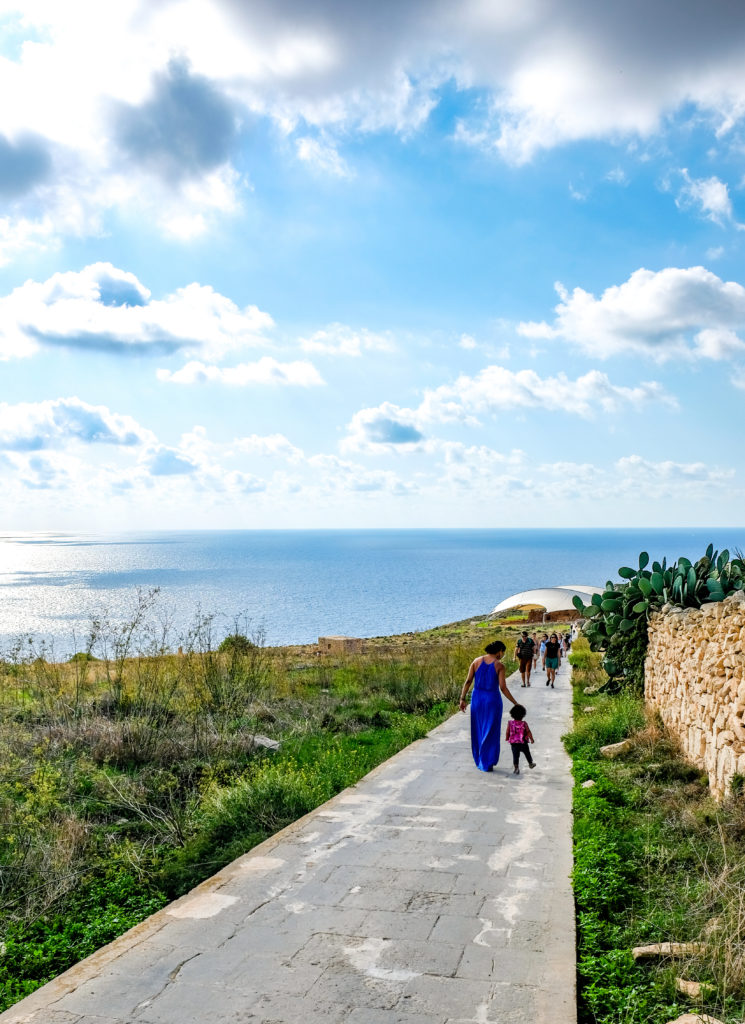
And they’re off to the Mnajra ruins next

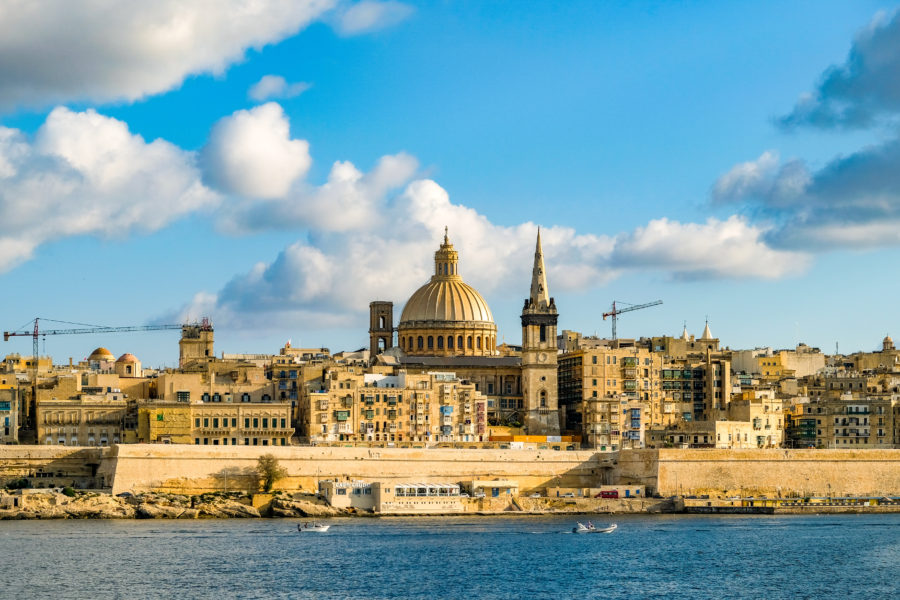
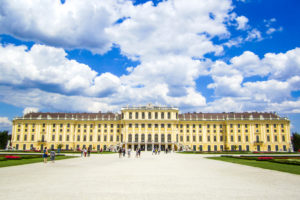
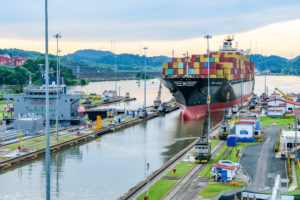
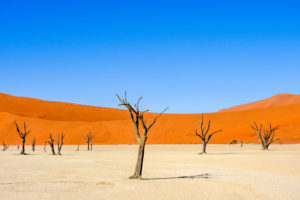




1 Comment
Leave your reply.